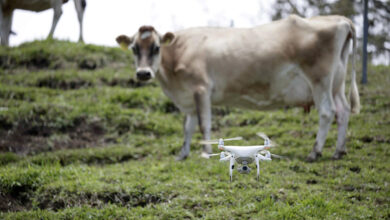What are the Ways to Remove Carbon Dioxide from the Environment?
In this article, we explain eight powerful and effective techniques to remove carbon dioxide from the environment and stop global warming in our region.

Photo: Pexels
LatinAmerican Post | Jorge Vuelvas Lomeli
Listen to this article
Leer en español: ¿Cuáles son las formas de eliminar el dióxido de carbono del ambiente?
In Latin America, the fight against climate change is an important issue affecting millions of people. Global warming, deforestation, and air pollution are urgent problems that require innovative and sustainable solutions. From reforestation and regenerative agriculture to cutting-edge technologies like carbon capture and storage (CCS), these strategies can potentially transform how we deal with climate change in Latin America. Here we present the most promising solutions to remove carbon dioxide from the environment.
1) Reforestation and Forest Conservation
Reforestation involves planting trees in deforested areas, and forest conservation, focused on protecting and sustaining existing ecosystems, are crucial strategies to address climate change in Latin America. These actions increase the capacity of forests to sequester CO₂, restore damaged ecosystems, provide habitats for local flora and fauna, and offer socioeconomic benefits to nearby communities.
2) Regenerative Agriculture
This promising and sustainable alternative seeks to improve soil health, increasing its organic carbon storage capacity and reducing greenhouse gas emissions. Regenerative agriculture is based on crop rotation, cover crops, reduced tillage, and the incorporation of organic fertilizers, allowing CO₂ to be sequestered from the environment and improving soil fertility and water retention capacity.
3) Restoration of Wetlands and Mangroves
Wetlands and mangroves are vital ecosystems essential in carbon sequestration and storage. Wetland and mangrove restoration involve rehabilitating and protecting these damaged or devastated ecosystems, thereby increasing their ability to capture CO₂ and mitigate the impacts of climate change. In addition, they provide essential ecosystem services, such as coastal defense, water filtration, biodiversity conservation, and the promotion of ecotourism.
4) Carbon Capture and Storage (CCS)
This emerging technology captures CO₂ from industrial and energy sources to store it safely in underground geological formations. This advanced technology has great potential to reduce the concentration of CO₂ in the atmosphere and contribute to the fight against climate change, addressing the problem of greenhouse gas emissions in key sectors of the economy.
In Brazil, the Santos Basin Pre-Salt project applies CCS technology to reduce CO₂ emissions in oil extraction. The CO₂ extracted along with the oil is captured and stored in underground geological formations instead of released into the environment, thus reducing greenhouse gas emissions in the oil industry.
5) Direct Capture Air (CDA)
CDA involves extracting CO₂ directly from the atmosphere using specialized devices and chemical processes. In Latin America, pilot projects and studies on the feasibility and effectiveness of CDA are being explored, in collaboration with international institutions, governments, and the private sector, to optimize the technology, reducing its costs and evaluating its possible applications, such as the production of synthetic fuels and the generation of CO₂-based building materials.
The "Orca" project is an example of a direct air capture technology application in Chile. In collaboration with Climeworks, this project seeks to install specialized devices in strategic areas to extract CO₂ from the air and store it to offset the emissions generated by copper mining and other industries.
We suggest you read: The melting of permafrost: an invisible threat of climate change
6) Bioenergy with Carbon Capture and Storage (BECCS)
BECCS is a technology combining biomass energy production with CO₂ capture and storage. This technique allows energy generation with low net carbon dioxide emissions since biomass absorbs CO2 during its growth, and the capture and storage process prevents its release into the atmosphere. BECCS offers a complementary approach to other clean energy solutions and can be applied in various sectors, such as electricity generation and heat production.
In Argentina, a research project led by the National Institute of Agricultural Technology (INTA) studies the feasibility of using agricultural residues, such as soybean and corn husks, to generate bioenergy through gasification. Applying BECCS technology in this project would allow the capture and storage of the CO₂ generated during the process, reducing net carbon emissions.
7) Carbon Mineralization
Carbon mineralization involves the chemical transformation of CO₂ into stable minerals, such as carbonates, through natural or induced reactions. By converting CO₂ to an inert solid, this technique enables safe, long-term carbon storage, thereby reducing its concentration in the atmosphere. Carbon mineralization represents a significant potential to combat climate change. It can be applied in various fields, from capturing CO₂ in industrial emissions to utilizing silicate-rich minerals and accelerating natural carbon capture and storage processes.
8) Urban Reforestation
Urban reforestation focuses on increasing vegetation cover by planting trees and creating green spaces. This solution offers multiple benefits since the vegetation acts as a natural CO₂ sink. In addition, urban reforestation contributes to mitigating the heat island effect, improves local biodiversity, and provides spaces for recreation and well-being for city dwellers.
Minera San Cristóbal, located in Peru, is developing a carbon mineralization project to mitigate CO₂ emissions from its mining operations. The project uses silicate-rich minerals extracted from the mine to accelerate the natural process of capturing and storing CO₂, transforming it into stable carbonates that can be stored safely and long-term.
Why are these Techniques so Important?
Adopting these techniques to remove carbon dioxide from the environment in Latin America can make a significant difference in the fight against climate change. From traditional practices like reforestation and regenerative agriculture to innovative technologies like CCS and CDA, each approach plays a vital role in climate change mitigation and adaptation in our region. Public policies and investments must focus on promoting and supporting these initiatives, thus guaranteeing a more sustainable future.




